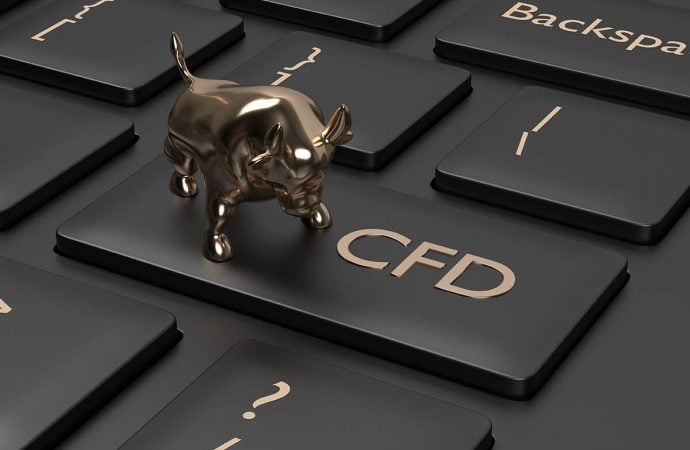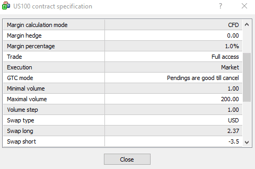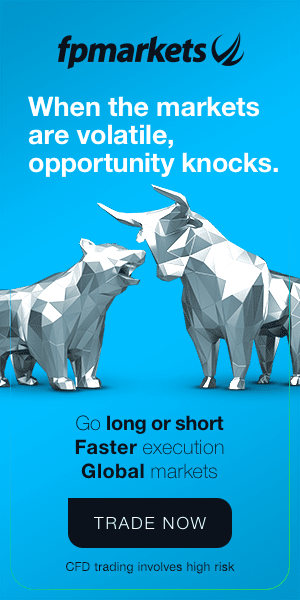Contract for differences, or CFDs, are leveraged products, with most having no fixed expiry date – the point at which a position, short term or long term, closes.
CFDs are an agreement, or contract, between retail investors to exchange the difference in the price movement of a financial instrument from the point at which the CFD position opens to its closing price. This can be either a long position or a short position (short selling).
CFDs are used to speculate on the future direction of a market’s price, without taking ownership of the underlying asset, or underlying market. CFD hedging is also a popular strategy used to offset potential losses.
To begin trading CFDs, opening a margin trading account (margin requirements differ between brokers and CFD markets), preferably with a regulated broker, is the first step. This affords exposure to larger positions, by offering leverage. Leverage is defined as having the option to trade larger positions while only providing a small percentage of your own capital. It is, however, important to understand the risks of excessive leverage – increased leverage may lead to excessive gains, but can also exacerbate losses.
CFD Types
CFDs afford flexibility. One of the benefits of CFDs is having the option of speculating in a wide range of global markets, such as currencies (FX), individual equities (share CFDs – think Apple’s share price), equity indexes (stock indices), commodities and cryptocurrencies.
Forex: Trading in FX markets reached $6.6 trillion per day in April 2019, up from $5.1 trillion three years earlier FP Markets offers extremely tight spreads (we touch on this later), starting as low as 0.0 pips. We’ve partnered with leading banking and non-banking financial institutions to ensure a deep liquidity pool, so you get the best available market prices and ultra-low latency order execution.
Individual equities and equity indexes: FP Markets offers exposure to international equity markets with genuine market data, with the ability to trade both long and short.
Commodities: Trading commodities CFDs are a great way to diversify your portfolio and hedge risks. When you choose to trade commodity CFDs with FP Markets, you have the option of a wide range of available commodities to trade, such as energy, metals, and agricultural products.
Cryptocurrencies: Cryptocurrencies offer a great way to diversify a portfolio. FP Markets offers cryptocurrency CFDs in major assets, such as Bitcoin, Litecoin, Ethereum, Bitcoin Cash, and Ripple.
Trade Size
CFDs work in lots/contracts – a standardised number of units (lots are usually referred to when discussing Forex and contracts or units with CFDs). This is the size of a CFD trade and is dependent on the instrument traded, which is easily found in the contract specification tab on MT4/5 platforms.
For example, the minimum contract size for a EUR/USD trade is 0.01 (1,000 units of the base currency), while for indices, with FP Markets, the minimum lot size is 1 lot.
Spread: The Difference Between Two Prices
Spreads on our MetaTrader 4 platform are variable, with quotes coming from major international financial institutions.
A spread is the difference between the bid and ask price. The bid price is the value at which traders sell and the ask price at which traders can buy. The spread between the two prices is the main way in which CFD brokers, or sometimes referred to as CFD providers, factor in their commission, the trading costs.
During liquid times our industry-leading spreads can go as low as 0.0 pips.
Profit/Loss
To calculate the profit or loss from a CFD trade, CFD traders multiply the trade size of the position (total number of contracts/lots) by the value of each contract (expressed as per-pip movement). You then multiply that figure by the difference in points between the opening price of the contract and the closing price.
As an example, EUR/USD at 1 standard lot is 100,000 units of the base currency. This means, assuming a dollar-denominated account, the position will move $10 per pip. Taking a long (buy) position at 1.3000 with 3 standard lots means you will gain/lose $30 per point. Therefore, a move to 1.2990 is equivalent to a $300 loss, while an advance to 1.3020 offers gains of $600.
How Do I Get Started in CFD Trading?
FP Markets provides everything you need to begin.
ASIC regulated in Australia, FP Markets combines state of the art technology and a huge product offering, creating a genuine destination for all types of traders.
To start trading, choose from our wide range of online trading platforms including MetaTrader 4 and 5, WebTrader, and IRESS.
Should you need guidance on trading, look no further than our dedicated Trader’s Hub.
If you need any other assistance, our experienced multilingual service is on hand to help.
DISCLAIMER: The information contained in this material is intended for general advice only. It does not take into account your investment objectives, financial situation, or particular needs. FP Markets has made every effort to ensure the accuracy of the information as at the date of publication. FP Markets does not give any warranty or representation as to the material. Examples included in this material are for illustrative purposes only. To the extent permitted by law, FP Markets and its employees shall not be liable for any loss or damage arising in any way (including by way of negligence) from or in connection with any information provided in or omitted from this material. Features of the FP Markets products including applicable fees and charges are outlined in the Product Disclosure Statements available from FP Markets website, www.fpmarkets.com, and should be considered before deciding to deal with those products. Derivatives can be high risk; losses can exceed your initial payment. FP Markets recommends that you seek independent advice. First Prudential Markets Pty Ltd trading as FP Markets ABN 16 112 600 281, Australian Financial Services License Number 286354.








 Access +10,000 financial
instruments
Access +10,000 financial
instruments

